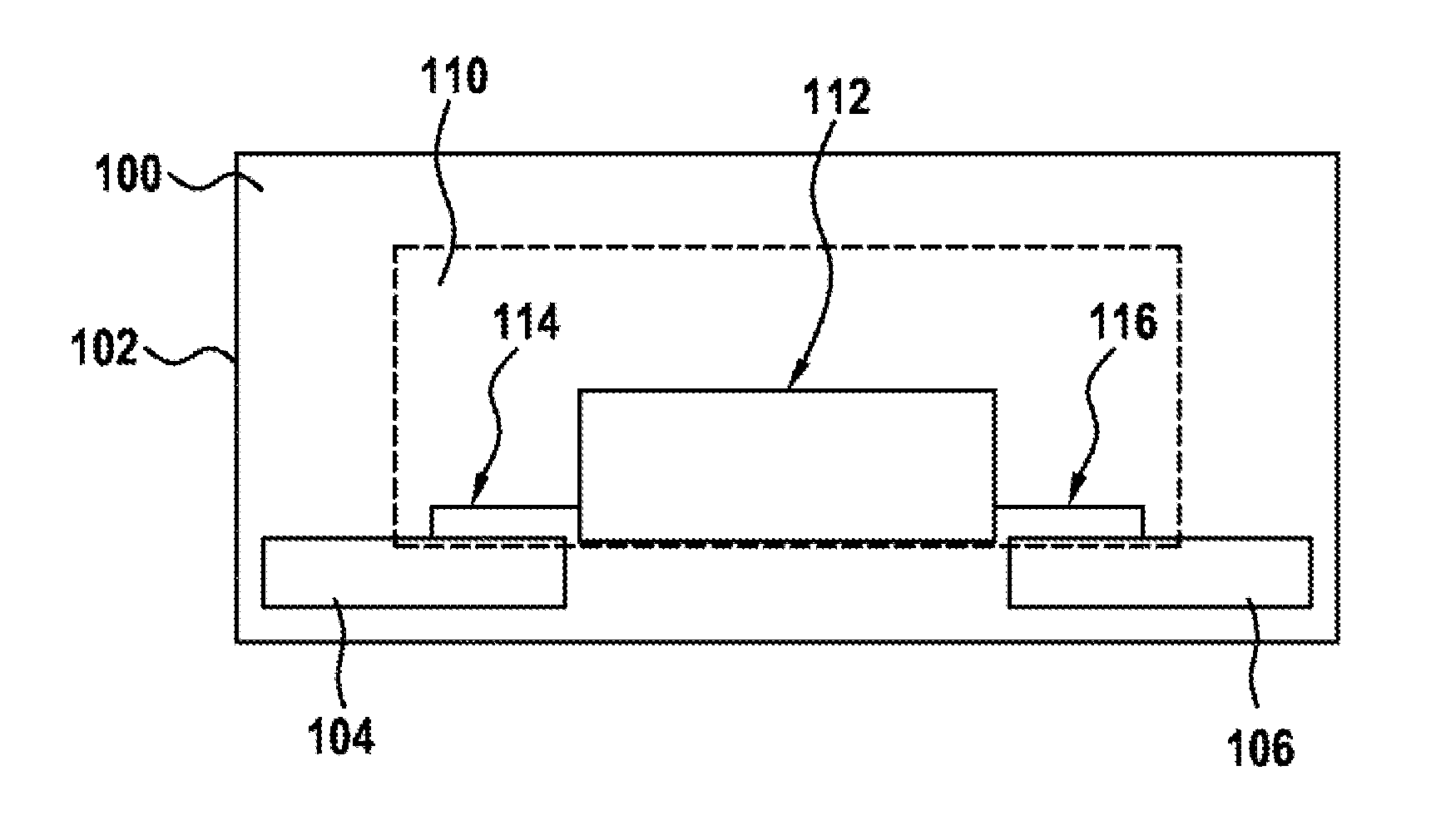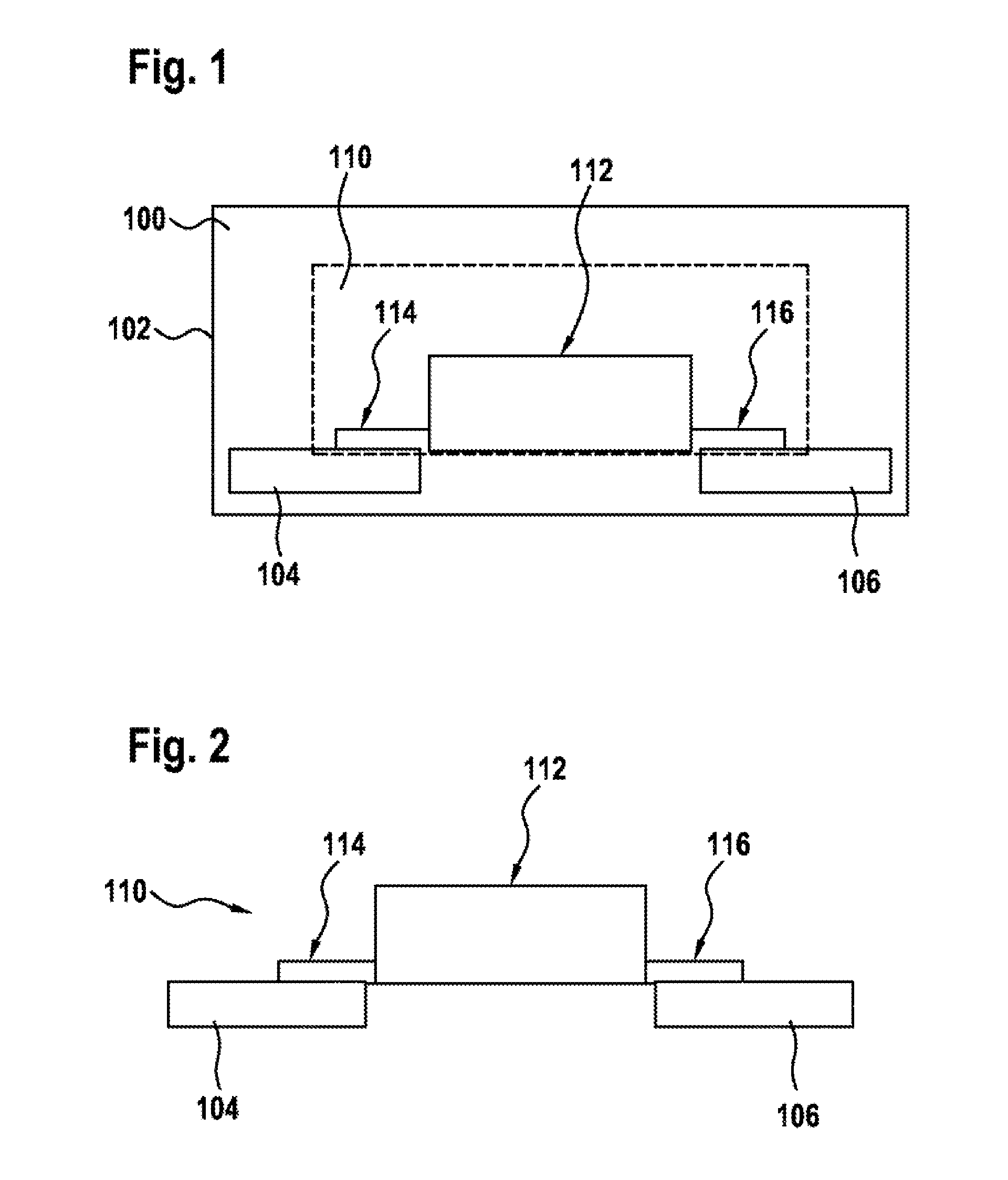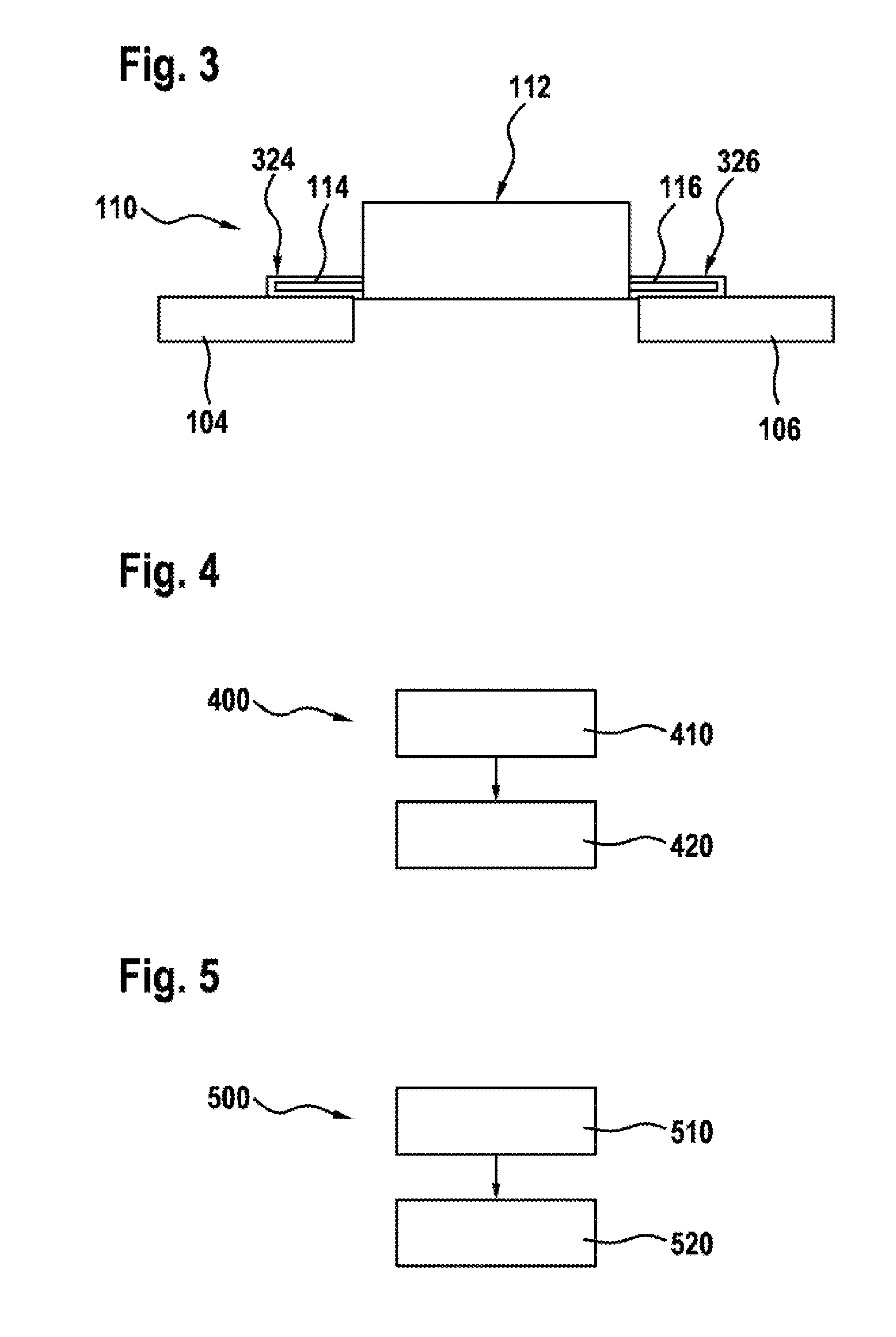Sensor device for an electrochemical energy store, electrochemical energy store, method for manufacturing a sensor device for an electrochemical energy store
a technology of electrochemical energy store and sensor device, which is applied in the direction of cell components, cell component details, instruments, etc., to achieve the effects of increasing reliability, preventing contact corrosion, and protecting the contact area
- Summary
- Abstract
- Description
- Claims
- Application Information
AI Technical Summary
Benefits of technology
Problems solved by technology
Method used
Image
Examples
Embodiment Construction
[0030]In the following description of preferred exemplary embodiments of the present invention, identical or similar reference numerals are used for the elements which are shown in the various figures and act similarly, a repeated description of these elements being omitted.
[0031]FIG. 1 shows a schematic view of an electrochemical energy store 100 according to one exemplary embodiment of the present invention. Electrochemical energy store 100, a housing 102, a first contact point 104 or first contact surface, a second contact point 106 or second contact surface, a sensor device 110, a sensor housing 112, a first terminal contact 114, and a second terminal contact 116 are shown. Electrochemical energy store 100 may be a lithium-ion cell, for example.
[0032]Electrochemical energy store 100 has housing 102, first contact point 104, and second contact point 106. First contact point 104 and second contact point 106 are situated inside housing 102. Electrochemical energy store 100 furtherm...
PUM
| Property | Measurement | Unit |
|---|---|---|
| electrically conductive | aaaaa | aaaaa |
| electrically conductively | aaaaa | aaaaa |
| electrochemical | aaaaa | aaaaa |
Abstract
Description
Claims
Application Information
 Login to View More
Login to View More - R&D
- Intellectual Property
- Life Sciences
- Materials
- Tech Scout
- Unparalleled Data Quality
- Higher Quality Content
- 60% Fewer Hallucinations
Browse by: Latest US Patents, China's latest patents, Technical Efficacy Thesaurus, Application Domain, Technology Topic, Popular Technical Reports.
© 2025 PatSnap. All rights reserved.Legal|Privacy policy|Modern Slavery Act Transparency Statement|Sitemap|About US| Contact US: help@patsnap.com



